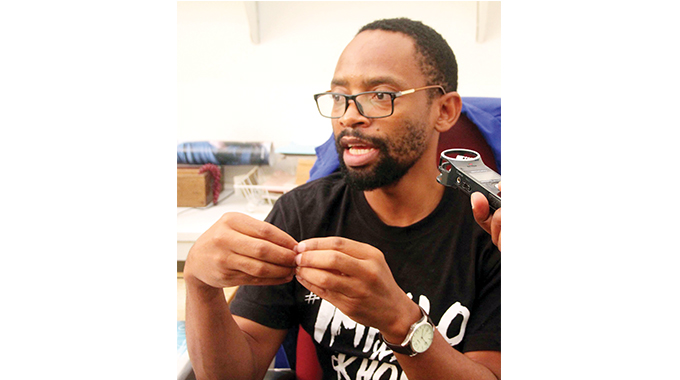Gwayi-Shangani Dam: Preps for 10 000ha irrigation land project starts

Leonard Ncube in Gwayi
WORK has started to prepare 10 000 hectares of land for establishment of irrigation projects under the National Matabeleland Zambezi Water Project (NMZWP) as crews are on 24-hour shifts to ensure completion of the Gwayi-Shangani Dam — a major component of the century old project — this year.
This comes amid revelations that about 350 households, a majority of them on the Binga side of the dam, could be relocated.
Gwayi-Shangani Dam, located in Mabale, Hwange District, will be linked by two pipelines, one to the Zambezi River and another to Bulawayo.
The Second Republic proposes to create a maize belt in the lowveld areas of Masvingo, Bulawayo Kraal in Binga and Kanyemba, Mashonaland Central through the Agriculture Recovery Plan under which the country will be able to do two maize cycles per year under irrigation.
Under the Agriculture Recovery Plan, it is envisaged that they will be opening up of 100 000 hectares of land in the first three years to 2023. By 2023, the first phase is envisaged to produce up to 1 million metric tonnes of grain targeting to satisfy industrial needs as well as exports.
Under the second phase of the greenbelt project, Government is targeting citrus plantation, macadamia and pecan nuts.
It is set to also benefit Binga and Hwange districts, as well as communities along the pipeline to Bulawayo and end in Cowdray Park where it is expected to permanently solve the city’s perennial water challenges.
The dam, with a holding capacity of 650 million cubic metres of water, and pipeline project are major components of the NMZWP, which was first mooted in 1912, but failed to take off under the Rhodesian administration.
Government’s implementing arm, the Zimbabwe National Water Authority (Zinwa) is working with China Water and Electric Corp’s engineers who recently moved back on site to resume full-scale construction of the dam.
The Chinese engineers had since December 2019 been held up in China due to Covid-19 induced travel restrictions and recently moved on site after returning into the country.
December 2021 has been set as the target for completion of the dam, which is at 40 percent, with eight metres of the 72-metre-high dam wall done so far.
Zinwa resident engineer Paul Dengu said workmen are working round the clock in an effort to meet timelines.
He appealed to Treasury to constantly avail funds for the project not to be derailed.
He said judging by the material and skills complement on site, there is capacity to finish the project within the set timelines.
“We have come up with an updated programme where we are now working 24 hours and it is possible for us to complete the project by December 2021. The major hiccup has been on the financial side but in terms of set up we have capacity to complete the dam and meet the timeliness we were given by Government hence we are on site,” said Eng Dengu.
He said most materials are available locally with only fly ash being imported from South Africa and only that which they use for non-crucial sections of the dam comes from Hwange because its quality is lower than the one from the neighbouring country.
The dam is a gravity arch structure using roller compacted technology which is the first such to be used in Zimbabwe while a 5-metre-thick block of concrete has been created on the base of the wall where water will plunge to prevent wearing off as was the case with Kariba Dam.
Treasury in the 2021 national budget allocated $4,5 billion for completion of the Gwayi-Shangani Dam wall.
Matabeleland North Provincial Affairs and Devolution Minister Richard Moyo on Friday visited the site and commended the contractor and Zinwa engineers for commitment to work.
“We want to thank the contractor, after being halted by Covid-19 they are back on site. This dam is going to supply water to Bulawayo and communities along the pipeline. As Government there is 10 000ha of land that has been identified to establish irrigation to help people from Hwange and Binga,” said Minister Moyo.
He said the dam will ultimately boost food security in the province.
Minister Moyo said responsible Government departments will start a process of identifying alternative land for villagers who will be displaced.
Preliminary work on the pipeline has begun after Government allocated money towards the project. Government has also floated a tender for the construction of the 260km Gwayi-Shangani Dam-Bulawayo pipeline.
Treasury has allocated $535 million towards the commencement of the pipeline, which is expected to be completed by the end of next year.
Already, work has started at areas that have been set aside to establish a green belt between Bulawayo and the dam as families living along the pipeline will have access to water for irrigation.
The dam will be the third biggest inland water body in the country after Tugwi-Mukosi and Lake Mutirikwi, both in Masvingo.
The Second Republic under the leadership of President Mnangagwa is primarily focusing on key projects aimed at transforming the lives of the previously marginalised black majority. — @ncubeleon










Comments